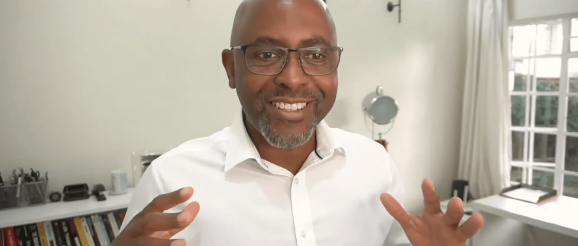Strategyzer Webinar recap: How to speed up innovation

Why are so many companies so slow in exploration? One reason is team behaviour. Another is the blockers that hold the team back. In this webinar, Tendayi and Alex outline four challenges they see slowing down innovation and what leaders can do to remove them. These insights will allow teams with the right behaviours to innovate. After all, if given the right opportunity, innovators will innovate. For every one of our failures, we had spreadsheets that looked awesome.” Scott Cook Co-founder & Chairman of INTUIT 1. Stop analyzing. Prioritize testing actions over analysis paralysis. Tendayi Viki emphasized the importance of prioritizing action in corporate innovation over analysis paralysis. He highlighted the inherent uncertainty in the innovation process and warned against the illusion of progress through excessive analysis. From idea to business Tendayi illustrated the nonlinear nature of transforming ideas into successful businesses, likening it to untangling a messy thread. He stressed the futility of trying to analyze such a complex process, where early signals can often mislead. Instead, he advocates for a process of designing and testing business models, emphasizing the need to swiftly iterate through ideas rather than getting stuck in overthinking and analysis. The key principle Viki highlighted was to design like you’re right, but test like you’re wrong. He urged innovators to focus on getting started rather than obsessing over perfecting the initial step, as rapid iteration is key to discovering viable ideas efficiently. Getting started is more important than getting the first step right. Let’s assume we’re going to get the first step wrong and simply correct it as we go. It is in the ‘testing like you’re wrong’ that you start refining your design. If you know you’re going to be right, it’s not innovation.” Jeff Bezos Founder of Amazon Ideate/pivot/kill Alex explained the need to break free from the constraints of analysis paralysis by making small initial investments and pre-allocating funds for innovation projects. Invest a small amount of money in the first step. Drawing on the example of Bosch, Alex highlighted the effectiveness of this approach in driving rapid progress and minimizing risk. An evidence-based budget enables teams to iterate and refine ideas based on real-world feedback. The value of running multiple experiments in parallel to foster innovation and the importance of being willing to abandon unsuccessful ideas. By embracing a culture of action, generating actionable insights, and allocating resources based on evidence, corporate innovators can overcome analysis paralysis and drive meaningful change. Remember, you can’t pick winners. You have to create conditions for winners to emerge. 2. Innovation is not a hobby. Allocate sufficient time and resources. It is of critical importance to allocate adequate time and resources to innovation initiatives. Across Strategyzer’s decades of experience in innovation, 90% of the time, it’s this time allocation that is lacking. It even poses a greater problem than financial resources. Innovation projects actually take longer if teams are not given sufficient resources and time, and the time aspect is the most important one. Remember, it doesn’t always have to be 100% upfront. We actually believe 60% is safer, because then it is easier to retire projects. It doesn’t have to be 100%, but 20%, is certainly not enough. We cautioned against the notion of professional innovators working in isolation, advocating instead for a blend of professionals and individuals from the core business. You generally need people from the core business because they have the knowledge. Ultimately, it is all about creating value for customers and for your business, with or without R&D and technology. Today, you need teams that are dedicated to exploring ideas. Teams that are capable of rapidly iterating, pivoting or killing an idea when needed. Strategyzer Discovery Sprint’s are designed to guide teams through this messy process in a more structured way. It begins with onboarding people and trying to get leaders to protect their time. Then they learn the Strategyzer tools and methods. Next, they begin to shape their ideas. And then, most importantly, they shape, test, and iterate. Finally, they make an evidence-based presentation to the leadership. 3. Find a home for innovation orphans. Align and collaborate with key functions within your company. We asked atendees about the difficulties of collaborating with key functions such as finance, legal, sales, and HR. Common barriers cited included reluctance to embrace new ideas, resistance to change, and concerns about compliance and risk. Clearly, there is a strong need to foster collaboration between innovators and key departments. Innovation is not just about generating ideas, but also about navigating internal processes and garnering support from across the organization. An analogy was shared from Tendayi’s experience of working with TD Ameritrade’s innovation lab, which referred to itself as the “home for homeless ideas.” This highlighted the importance of providing a supportive environment for ideas that may not initially find traction within the company. One of the biggest barriers that we often see when we’re trying to run an innovation sprint is that the idea is stuck in some function. For example, sales won’t let us talk to customers. Now you’re slow. The legal department won’t approve the experiment. Now you’re stuck. Compliance won’t approve working with a particular experimentation tool to create landing pages. Now you’re stuck. It’s a very difficult blocker. It’s almost like the civil service—they can just push your paper around. And time just ticks by. You’re no longer making progress. It is virtually impossible for innovation to succeed without really collaborating with key functions within your organization.
